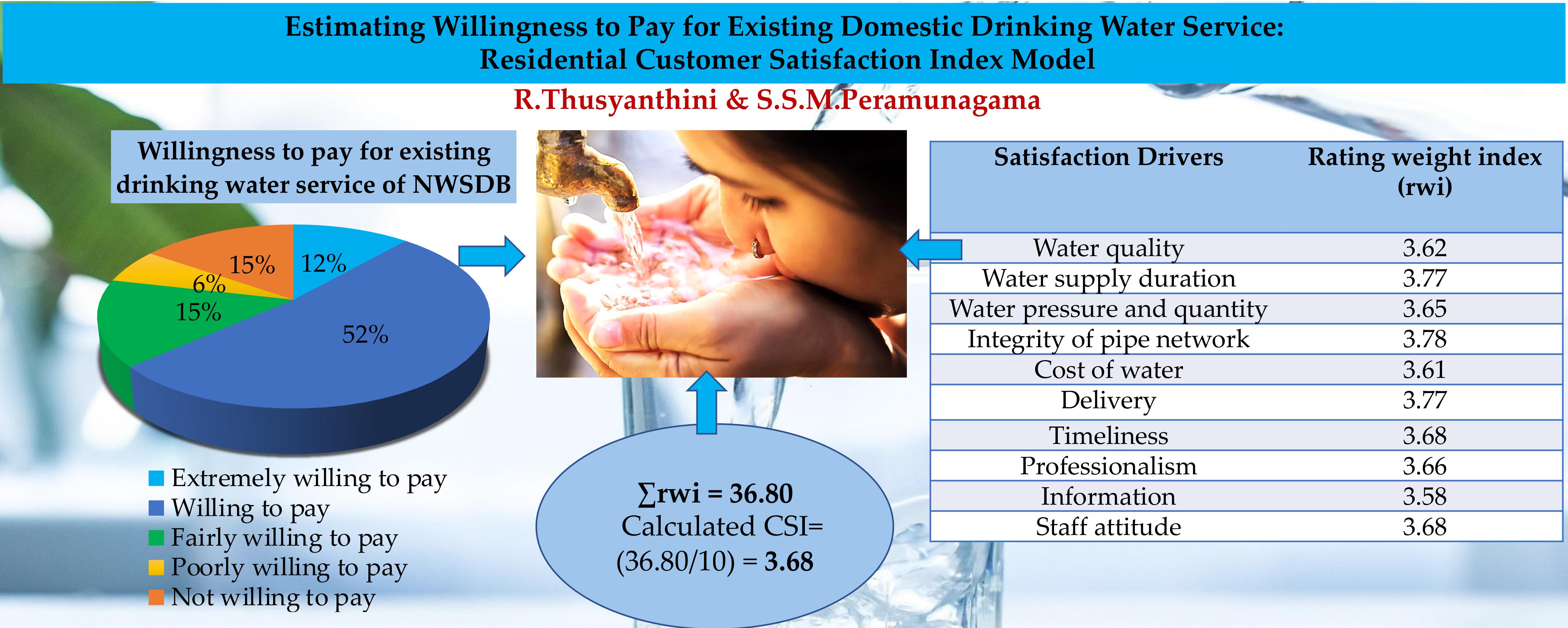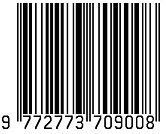Estimating the Willingness to Pay for Existing Domestic Drinking Water Service: Residential Customer Satisfaction Index Model
DOI:
https://doi.org/10.31357/ait.v1i3.5293Keywords:
customer satisfaction index, drinking water, Sri LankaAbstract
The global is not on track to achieve sustainable development goal (SDG) 6 while access to safely managed /improved drinking water services are a basic human right for wellbeing and public health of people. Customer satisfaction is one of the basic measures of the quality of drinking water service. Hence, this study was analyzed the perception of residential customers’ satisfaction of National water supply and drainage board (NWSDB) with domestic drinking water service in Karachchi divisional secretariat division of Kilinochchi district. The analyse was based on customers’ perception of ten selected satisfaction drivers, a set of structured questionnaire was administered for 150 residential customers of NWSDB using google form, however only 131 of them responded . The data was analyzed using descriptive analysis and a customer satisfaction index (CSI) model. The calculated CSI was 3.68 points on a 5 point scale, which meant that drinking water service in the study area was perceived as satisfactory by the residential customers. In addition, two-third of the customers were willing to pay for water, while one-third of them were not willing to pay based on their overall perception of the services of the NWSDB. This illustrates that the service of the NWSDB to its customers was adequate despite an improvement . To recommend, there is a positive correlation between safely managed/improved drinking water services and customers’ willingness to pay for water service. The NWSDB should undertake to improve drinking water services. Resultant, NWSDB should recover cost, provide water service to the whole district/national population to achieve the SDGS which are directly and indirectly depend on SDG6.

Downloads
Published
How to Cite
License
Copyright (c) 2021 Thusyanthini Ramanathan, S.S.M. Peramunagama

This work is licensed under a Creative Commons Attribution-NonCommercial-NoDerivatives 4.0 International License.
The Authors hold the copyright of their manuscripts, and all articles are circulated under the terms of the Creative Commons Attribution License, which permits unrestricted use, distribution, and reproduction in any medium, as long as that the original work is properly cited.
The use of general descriptive names, trade names, trademarks, and so forth in this publication, even if not specifically identified, does not imply that these names are not protected by the relevant laws and regulations. The authors are responsible for securing any permissions needed for the reuse of copyrighted materials included in the manuscript.




